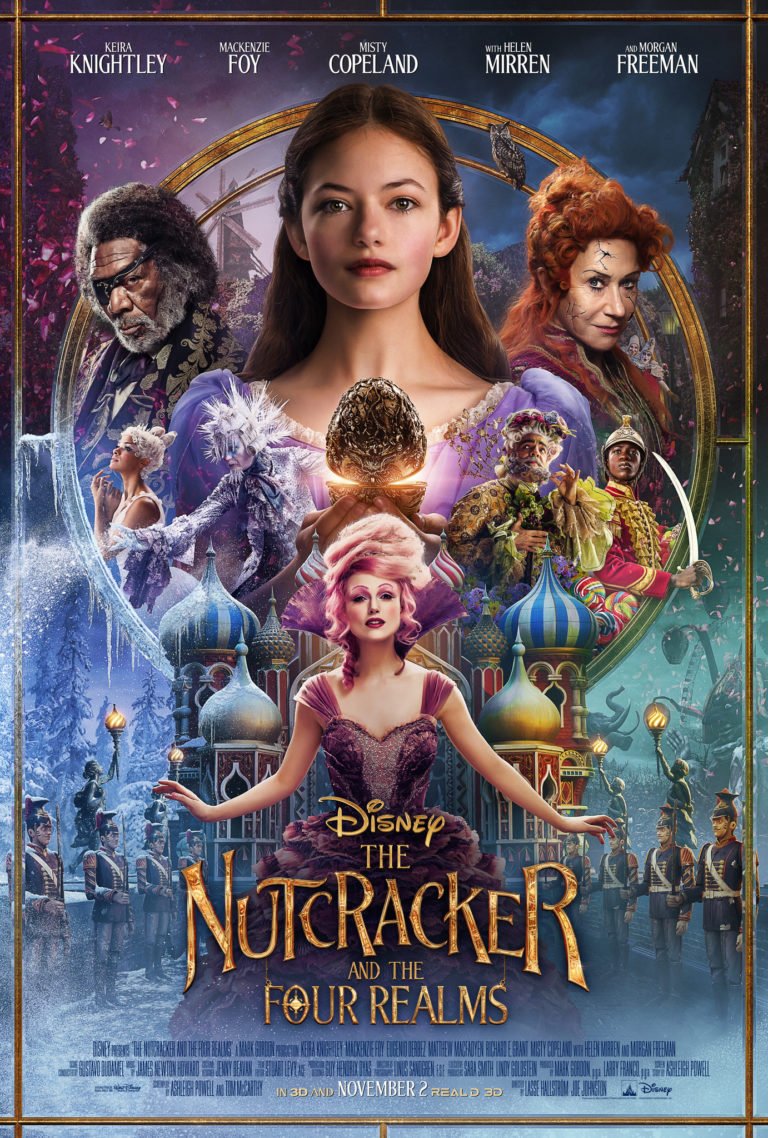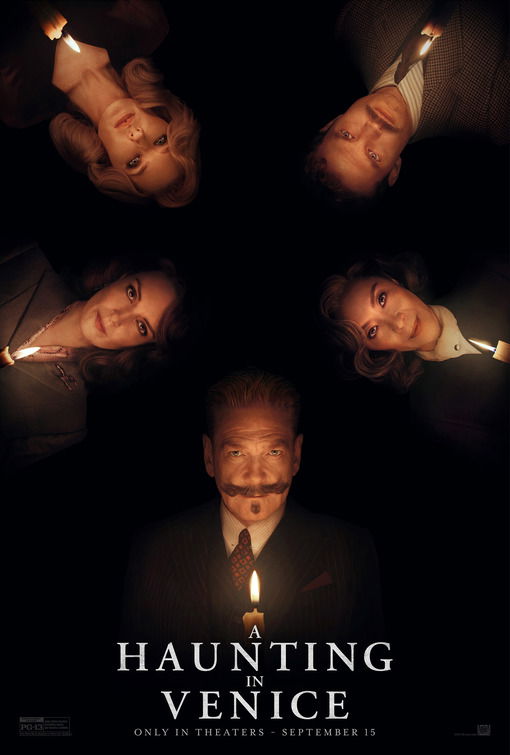“Exposing Haunted, Deadly Webs of Grief”

| None | Light | Moderate | Heavy | |
|---|---|---|---|---|
| Language | ||||
| Violence | ||||
| Sex | ||||
| Nudity |
What You Need To Know:
Loosely based on an Agatha Christie novel, A HAUNTING IN VENICE tells a satisfying mystery story with well-developed characters. It’s fun watching the actors go through their paces as the mystery unfolds. The movie has some morally uplifting, Christian content and references. For example, one suspect turns out to be a still devout former nun who does a good deed. However, A HAUNTING IN VENICE also has some atheist doubt, two or so unexplained occult moments, brief foul language, and scary situations. So, MOVIEGUIDE® advises strong or extreme caution.
Content:
Light moral worldview about solving two murders and an apparent suicide, but the main character, who’s committed to justice, says he’s lost his faith because of all the death and murder he’s seen and the ending is ambiguous on whether he regains his faith although his experience in the story convinces him to come out of retirement, but a supporting character retains her Catholic faith (she’s a former nun) and does a good deed, a boy takes care of his father who’s suffering from PTSD because of World War II, and a sacrifice occurs, plus there’s a psychic medium in the movie who conducts a séance, but she’s exposed as a charlatan at one point, though one of her “tricks” is unexplained and though some ghostly sightings are exposed as fake hallucinations, two or so others remain unexplained, including the one trick just cited
Seven mostly light obscenities (just one “s” word), two strong profanities misusing the Savior’s title, one light exclamatory profanity
Nothing gruesome or particularly bloody, but there is some startling scenes of violence such as a body falls from a third or fourth story and is impaled on something in a courtyard below, references to suicide, a couple deadly accidents occur, someone tries to drown a man in the bob for apples bucket, a corpse is found, a plainclothes police detective is shown in a flashback trying to save and retrieve a drowned young adult woman, and the incident haunts him, people discover
No sex or sexual immorality
No nudity
Some alcohol use
Brief smoking and a natural hallucinogen plays a part in the mystery; and,
Stealing, lying, at least one character is shown to have manipulated another character, greed leads a character to lie and deceive a friend, and a blackmail plot becomes part of the mystery, but all is exposed.
More Detail:
As the movie opens, Belgium detective Hercule Poirot has retired to Venice, Italy, where he just wants to tend to his little vegetable garden. People line up outside his home, however, wishing to convince Hercule to help them.
His longtime friend, Mrs. Ariadne Oliver, a mystery novelist, coaxes Hercule to attend a Halloween Party at the allegedly haunted mansion of Rowena Drake, a retired opera singer. The mansion is located just off one of the city’s famous canals. The widowed Mrs. Drake is having the party to benefit local orphaned children. However, later in the evening, a psychic medium named Joyce Reynolds is holding a séance to contact Mrs. Drake’s young adult daughter, who committed suicide several year ago. Mrs. Oliver wants Hercule to attend the seance so he can expose any tricks Reynolds uses to take advantage of Mrs. Drake’s grief over her daughter. Mrs. Drake quit singing when her daughter died.
Sure enough, Hercule exposes the medium for having two secret young accomplices hiding in the chimney. Reynolds admits her deceit but remains adamant she can speak to the dead. Everyone is then startled to hear Reynolds speaking in the dead daughter’s voice and shouting, “Murderer!”
A terrible thunderstorm breaks out in the city, and everyone decides to wait out the storm. However, around midnight, the medium’s body plummets off the third floor and is impaled below. It’s up to Poirot now to solve the murder, with no help from the police, because the storm has forced a lockdown throughout the city.
A HAUNTING IN VENICE is perhaps the best of the three Hercule Poirot movies starring Kenneth Branagh as Agatha Christie’s famous Belgian detective. It’s the first one of the three that’s not a remake of a previous, better movie. However, the movie does not follow closely the original novel, which took place in the late 1960s and contained no séance. The names of the suspects remain virtually the same, but in the original novel, a teenage girl at the party, which takes place in an English village, says she once witnessed a murder, then ends up killed. So, Poirot must found out what recent murder the girl was referring to in the broad community where she lived.
Also, unlike Christie’s novels, Poirot confesses to Mrs. Oliver in the new movie that he’s lost his Catholic faith because of all the murder and death he’s seen over the years. To compensate for this, the personal assistant to Mrs. Drake is a devout Catholic who, it’s later revealed, used to be a nun. At one point, she cites the condemnation of witches in Exodus 22:8 in reference to the psychic, but this only makes her a suspect in the medium’s murder.
The solution to the murder mystery may seem a little contrived, but it’s satisfying, nonetheless. A blackmail plot is part of the mystery. Also, a natural hallucinogen plays a part in the mystery. Furthermore, most of the occult, ghostly scenes and references turn out to have natural explanations, though two or so remain unexplained. Finally, the ending is ambiguous as to whether Hercule Poirot regains his faith, but his experience solving the mystery convinces him to come out of retirement to help people. Also, the former nun who still believes does a good deed at the end, making her a very positive character.
That said, MOVIEGUIDE® advises strong or extreme content regarding the movie’s scary moments, murder mystery and brief foul language.


 - Content:
- Content: 





